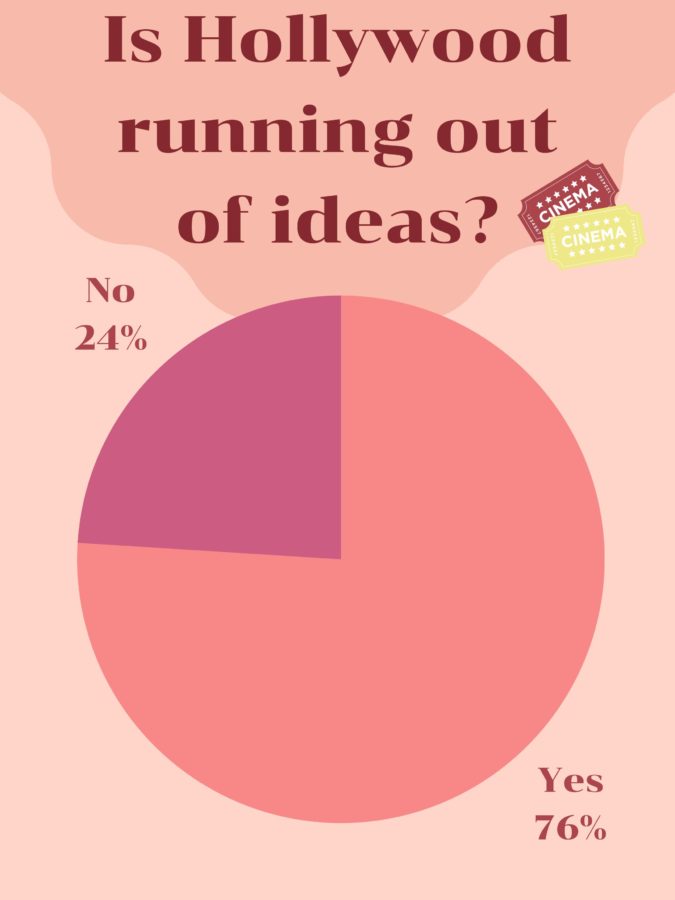Modern Hollywood films lack creativity
March 29, 2022
“Scream 5,” “Tall Girl 2,” “Ice Age 6,” nothing in the lineup of new films seems interesting, just more sequels, remakes and live action. Even original releases seem boring after one looks at their summary, full of predictable cliches and overused tropes.
Hollywood is the center of American filmmaking, made up of big-budget studios with talented well-known directors, and yet it is producing the same recycled plots over and over. No matter the genre—romance, comedy, action, horror—it seems like all the good ideas have run out.
No content is without influence and entirely original. Cliches are popular for a reason—they follow simple narratives that are both easy and enjoyable for an audience to follow. Cheesy romances will be full of obvious miscommunications and dramatic declarations of love in the rain, and slashers will rely on a cast that splits up the group when the killer is still on the loose. While these tropes may be entertaining, audiences can be quick to lose interest when nothing new is added.
According to the Nashville Film Institute, audiences see the reliance and overuse of popular tropes as lazy, resulting in movies losing their impact; however, a way to avoid this is through the use of transformative elements, such as irony and subversion. Both are techniques which allow the creator to take common plots and shape them into something more unique. The plot of the 2017 production “La La Land” was a typical rom-com meet-cute, and subverted the audience’s expectations with the main characters not ending up together, creating a more realistic and compelling story.
The issue arises when nothing is added to enhance the original concept. When the only elements introduced in a movie are new actors or a live cast, then the film has little purpose, such as the live action remake of “The Lion King,” which was given a score of 52% by Rotten Tomatoes for lacking depth and capitalizing off the nostalgia of the original.
Taking a popular, well-loved movie and remaking it is an easy way to guarantee an audience; this is the same reason why film adaptations of books and other forms of media are created. An example of this would be the 2019 remake of “Little Women.” The 2019 adaptation brings the original story to a newer audience, introducing more advanced technology, including innovations in sound production and camera work.
Because Hollywood consists of major production companies, the income of a film is the priority. According to Investopedia, the average cost for a movie under a major production company is around $65 million, closer to $100 million with the addition of marketing and distribution. These budgets prevent studios from taking risks with their movies, favoring big named directors, To comproducers, writers, other staff and actors to ensure a profit.
A simple solution to this cycle of repetitive plotlines would be to bring in new actors and crew members, and by extension bringing in new ideas, which would reintroduce creativity to the big screen.
Personally, to remind myself of good cinema, I’ve recently rewatched “Spider-Man: Into the Spider-Verse,” a superhero movie that I’m waiting for the new “Spider-man Across the Spider-Verse (Part One),”



